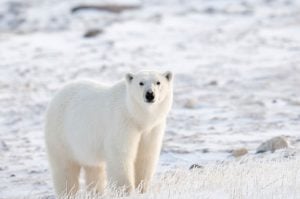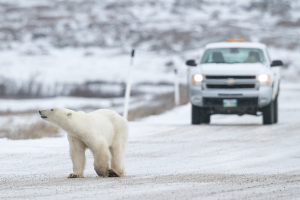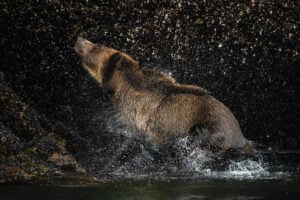Ontario’s proposed pilot program for managing the black bear population in the northern parts of the province has left animal rights activists and hunters divided.
In response to nuisance bears coming into northern communities, the province is looking into implementing a limited spring bear hunt for certain regions for the first time since the government banned the practice in 1999. And 15 years have not dulled any of the sharp tensions that surround the issue.
Starting in late 1998 and running up to the province’s general election the next year, the International Fund for Animal Welfare waged an aggressive ad campaign against Conservative MPPs from certain ridings in southern Ontario.
IFAW’s primary issues were centred on several hunting policies of the Mike Harris government, including the spring black bear hunt, says Sheryl Fink, director of wildlife campaigns at IFAW. At the time, the Ontario Ministry of Natural Resources said the hunt resulted in as many as 274 bear cubs becoming orphaned each year. “Typically, we don’t hunt other species in the spring when the young are still dependent on the parents. We wait until the fall,” says Fink, noting IFAW does not take issue with the fall bear hunt.
In January 1999, the provincial government announced the ban on the spring bear hunt. The Progressive Conservatives won the election later that year. Since then, black bear hunting has been restricted to autumn, a fact that is to blame for the rise in nuisance bears, says Terry Quinney, the provincial manager of fish and wildlife services at the Ontario Federation of Anglers and Hunters. These bears wander into populated areas, rifle through garbage looking for food and pose a threat to the humans they encounter. Local or provincial police often have to get involved — and sometimes shoot the animals.
In 2003, the province commissioned a nuisance bear review committee. While the committee did not find any connection between the cancellation of the spring hunt and reported increases in nuisance bear activity, it did recommend reinstating a scaled-back, highly regulated version of the hunt, citing the spring tourist dollars the hunting and outfitting industry brought to the region.
But Quinney is quick to point out that the pilot project would not be a reinstatement. For starters, the program would have the narrow scope of select northern regions, and municipalities within those regions would have to opt in. “So there are going to be a lot of communities that aren’t going to have the benefit of a spring bear hunt yet,” he says. But he adds “It’s a step in the right direction.”
Cities such as Sudbury and Timmins have already passed resolutions to opt into the program. Thunder Bay’s mayor, Keith Hobbs, however is in no rush to do so. “I’m not an animal activist,” he says. “I just think there are better ways to control the bear population.” He would rather see problem bears transplanted and more effort put into educating the public on how to prevent human-bear interaction in the first place.
While some city councils were quick to get on board with the proposal as a solution to bear problems, IFAW’s Fink says the project will just burden the cities further. “There’s no evidence that reintroducing the spring bear hunt will result in fewer nuisance bears, which is what the government is pitching it as,” she says. “They’re offloading the responsibility for bears onto the municipalities, which are not well equipped to handle it financially or logistically.”




